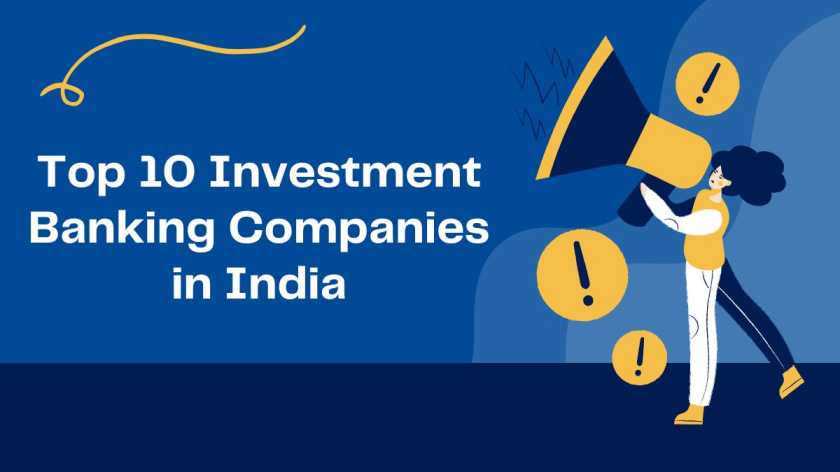When a privately owned company wants to transform its registration into a public-owned company at that point it launches its initial public offering or IPO. This procedure assists a company to raise capital by selling its shares to the public. In recent years, many Indian companies have followed this strategy and launched their own IPOs to raise capital.
Launching an IPO for the first time may be intimidating for a company. There are numerous procedures, rules, and regulations a company has to follow. Even a company has to clear certain eligibility requirements created by SEBI for launching its IPO.
This article is the ultimate guide for a company that is willing to go public. Keep on reading to learn more about the advantages, disadvantages, purpose, and various procedures for launching an IPO.
What Do You Understand by an IPO?
An initial public offering (IPO) is the procedure through which a company makes its shares public for the first time. This means that common people can buy and invest in the shares of those companies that have launched an initial public offering (IPO). This procedure makes these people the company’s shareholders and they become a part of the company.
During fundraisers, numerous companies have taken the assistance of initial public offering (IPO). Sellers and buyers can trade the shares of various companies on any stock exchange. IPOs are usually launched to promote the growth and success of a company.
Different Kinds of IPOs
There are two major kinds of initial public offerings (IPOs). These two kinds have been vividly elucidated below:
Fixed Price Offering
When the share value of a company is predetermined and remains fixed unless the entire initial public offering process ends is known as the fixed price offering. The fixed price of the shares does not change even though its demand might be at a higher spectrum or a lower spectrum. Therefore, this procedure firmly allows the investors to buy the shares at the predetermined fixed price.
Small companies or companies with a stable valuation often opt for the fixed price offering IPO as it is more suitable for them.
Book Building Offering
The second kind of IPO is the book-building offering. The procedure of this IPO is the exact opposite of the fixed price offering method. Here the investors will determine the value of the shares by bidding on them.
The company usually selects a certain value range within which the investors will bid to buy a share. The final price is determined by analysing the demand for the shares. This type of initial public offering process is best suited for big companies as their valuation is changeable.
Reasons for Going Public
In the current scenario, numerous companies are going public. There are various reasons why most companies are launching their initial public offering (IPO). These reasons have been stated below:
-
It Acts as a Fundraiser
IPO acts as an easy fundraiser for a company. Hence, most companies launch IPOs to raise capital for themselves. These capitals assist the companies in expanding their venture, launching new products, repaying their loans, etc.
-
Enhances Financial Position
An initial public offering (IPO) also enhances the financial position of a company. In a venture, by selling the shares, the public accumulates a huge capital that automatically boots its financial position. This secures a company’s future and helps it to get loans easily.
-
Gives Exit to the Current Investors
Initial public offering (IPO) acts as an exit route for the current investors of the companies. These are the private investors who had invested in the company before it became public. These investors can liquidate their shares of the company through the offer for sale method (OFS) on the stock exchange where the company has launched its IPO.
-
Marketability
As soon as the shares of a company are listed on a stock exchange, its value increases and becomes more tradable. Thus inviting numerous traders to buy the shares and become a part of the company.
-
Boosts the Trust of the Investors
Companies that are listed on a stock exchange have to follow guidelines and rules that are set by SEBI. These rules and regulations supervise various actions of a company like its trading and corporate practice.
Thus, these companies do not follow any malpractice and follow transparency. Therefore, companies launch IPOs to gain the trust of numerous traders or investors.
Advantages and Disadvantages of IPOs
An initial public offering (IPO) has various advantages as well as disadvantages. These are as follows.
Advantages of an IPO
- Investing in an IPO of a growing company will guarantee the investor a good amount of return
- IPO helps a company create a benchmark against its competitor
- IPO will help a company get more recognition and attention from the customers as well as the suppliers
- Going public will create high liquidity for the company
- A company will also attract plenty of valued employees after it brings an initial public offering
Disadvantages of an IPO
- An initial public offering (IPO) causes a lot of distraction while managing a business
- After going public a company has extra pressure to create timely periodic reports for the investors
- IPO gives voting rights to the new investors as well
- The company has to be extremely transparent and needs to produce disclosure
- There are instances when an IPO of a company does not turn out to be successful and the investor might end up losing a significant amount of their investment
Procedures a Company needs to follow before launching its Initial Public Offering (IPO)
A company needs to follow a particular initial public offering process before going public. Here is a detailed IPO guide that a company should follow before launching its IPO in the market:
-
Hiring of Financial Experts
The first step of an initial public offering (IPO) starts by hiring financial experts. Companies employ an underwriter or an investment bank who would study and scrutinise various parameters before launching an IPO.
The task of an underwriter is to act as a mediator between the company and the new investors after the IPO goes public. Apart from this, an underwriter has to create an underwriting agreement after scrutinising various financial parameters of the company. This agreement usually consists of details of various deals and the total capital the company is about to raise.
Hence, the demand for underwriters and investment banks is increasing rapidly. This creates lucrative job opportunities so enrolling in some banking courses will help an individual to know more about IPO and the procedures relating to it.
-
Registration
According to the Companies Act 2013, it is mandatory for a company to submit a prospectus known as the Red Herring Prospectus (RHP). This statement or document needs to be submitted to the registrar of companies for registration. This needs to be submitted three days before the launch.
A Red Herring Prospectus (RHP) comprises various disclosures that are stated in the Companies Act and the SEBI rules. Here are the main disclosures that are mentioned in the prospectus:
- Firstly, it contains definitions of various terms that are commonly used in that industry.
- Secondly, the prospectus must contain all the risk factors that may directly or indirectly affect the finances of the company
- Thirdly, there must be a section where the company has to state how they are going to use the capital raised from the investors
- Fourthly, there should be a section that describes the industry in which the company falls into
- The company also has to describe its business and its activities related to the business
- Lastly, there must be a segment where the company has to all the miscellaneous things about the company including any ongoing legal case.
- Verification by the Securities and Exchange Board of India (SEBI)
The red herring prospectus of the company is then sent to SEBI for further verification. SEBI scrutinises the facts of the prospect before it gets approval. After getting approved a company can disclose the date on which it is going to launch its IPO.
-
Sending Application to a Stock Exchange
An application is then sent by the company to a suitable stock exchange. This application states the desirable dates the company is planning to launch its IPO.
-
Creating Hype by Marketing Strategies
Marketing is one of the most essential strategies a company follows before launching its IPO. Advertisements are made to create hype in the public relating to the company. Various marketing strategies are used by the marketing team more than two weeks before the launch.
-
Creating a Fixed Price for the Shares
For fixing the price of the shares companies have the liberty to choose between the fixed-price offering method or the book-building offering method. If a company decides to follow the fixed-price offering method then it has to announce the price of the shares before it gets launched. However, in the case of the book-building offering method the company can announce 20 percent of the price range.
-
Assigning of Shares
In the end, the company has to decide the maximum number of shares each investor can invest in.
Conclusion
Initial public offering (IPO) holds an extremely important position in any company. In recent years, IPOs have become quite popular and many companies have launched them. Due to this demand, companies are hiring employees who are well-versed in IPO and investment banking.
Imarticus Learning has launched its new investment banking course for individuals who are interested in commencing a career in the financial sector. This course will enhance one’s knowledge regarding finance and IPO. It also guarantees alluring job opportunities.
So without any further delay enrol now!
Frequently Asked Questions (FAQs)
- Does Investing in an IPO possess a risk factor?
Investing in an initial public offering (IPO) does possess a risk factor due to the volatile nature of the market. The value of the shares keeps on fluctuating throughout the day due to various factors.
- Are IPOs free from taxes?
When a trader buys some IPOs then those are not taxable. However, when the investors will sell these IPOs then a tax will be deducted as it is considered as capital gains.
- What is the maximum number of IPOs a trader can buy?
A trader can not buy more than six lots of IPOs from a particular company. Six lots are equivalent to 1200 shares. Hence, an investor can only invest in 1200 shares of a particular company.
- What is the best time to sell an IPO?
On a stock market, trading takes place after 10 AM, and this session continues till 3:30 PM. This period is considered to be the best time to sell an IPO to earn considerable profits.









